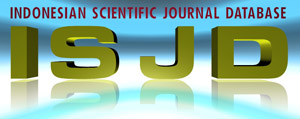Pendidikan Vokasi dan Pengembalian Upah
DOI:
https://doi.org/10.23887/jish.v12i1.56689Keywords:
Pendidikan Vokasi, Pengembalian Upah, Tingkat PengangguranAbstract
Tingkat Pengangguran Terbuka (TPT) pendidikan menengah dan pendidikan tinggi di Indonesia didominasi oleh pendidikan vokasi yaitu SMK dan Diploma. Hal ini menjadi ironi ditengah tujuan pendidikan vokasi adalah mencetak tenaga kerja dengan skill dan kompetensi yang baik sehingga mudah terserap pada pasar tenaga kerja. Permasalahan sulit diserapnya tenaga kerja pendidikan vokasi dapat memicu permasalahan ketenagakerjaan lainnya seperti tingkat pengembalian upah. Tidak maksimalnya penyerapan tenaga kerja vokasi berhubungan dengan tingkat produktivitas yang lebih rendah di pasar tenaga kerja yang dapat berdampak pada disparitas upah dibandingkan tenaga kerja pendidikan non-vokasi. Penelitian ini bertujuan untuk melihat perbedaan pengembalian upah menurut jenis pendidikan vokasi dan non vokasi. Data Sakernas Agustus 2021 diolah menggunakan metode Two-Step Heckman untuk mendapatkan probabilitas seseorang mengenyam pendidikan vokasi dan probabilitas seseorang untuk bekerja dan mendapatkan upah . Selain itu penelitian ini juga menggunakan mixed-effect linier regression untuk melihat pengaruh faktor kontekstual. Hasil penelitian menemukan bahwa kombinasi pelatihan dan pendidikan vokasi berdampak pada pengembalian upah terbesar pada lulusan Diploma. Peningkatan partisipasi pelatihan pada lulusan Diploma dan penghapusan stigma produktivitas lulusan SMK akan mendorong pengembalian upah lulusan vokasi yang lebih tinggi.
References
Ahmed, S., & McGillivray, M. (2015). Human capital, discrimination, and the gender wage gap in Bangladesh. World Development, 67, 506–524. https://doi.org/10.1016/j.worlddev.2014.10.017
Amalia, N., & Sugiharti, L. (2020). Perkembangan Tingkat Pengembalian Investasi Pendidikan Menengah diIndonesia Tahun 2015 dan 2018. Jurnal Ekonomi Dan Pembangunan Indonesia, 20(2), 231–252.
Bano, R., & Ridhwan. (2020). Perbedaan Tingkat Upah Pekerja di Sektor Manufaktur dan Jasa. Societas: Jurnal Ilmu Administrasi & Sosial, 9(2), 115–128. http://ejournal.unmus.ac.id/index.php/societas
Borjas, G. J. (2016). Labor Economics (Seventh). The MacGrow-Hill Companies.
Broecke, S., Quintini, G., & Vandeweyer, M. (2017). Explaining international differences in wage inequality: Skills matter. Economics of Education Review, 60, 112–124. https://doi.org/10.1016/j.econedurev.2017.08.005
Catts, R., Falk, I., & Wallace, R. (2011). Vocational learning: innovative theory and practice (Vol. 13). Springer Science & Business Media. http://www.springer.com/series/6969
di Gropello, E., Kruse, A., & Tandon, P. (2011). Skills for the Labor Market in Indonesia Trends in Demand, Gaps, and Supply Human Development.
Greer, T. W., & Carden, L. L. (2021). Exploring the gender wage gap among project managers: A multi-national analysis of human capital and national policies. International Journal of Project Management, 39(1), 21–31. https://doi.org/10.1016/j.ijproman.2020.09.004
Heckman, J. (1974). Shadow Prices, Market Wages, and Labor Supply (Vol. 42, Issue 4).
Laut, L., Putri, A., & Yustirania, S. (2020). Pengaruh PMA, PMDN, TPAK, PDRB Per Kapita, Pengeluaran Pemerintah Terhadap Disparitas Pendapatan Jawa. Stability: Journal of Management & Business, 3(2), 21–34.
Liu, H., Fernandez, F., & Dutz, G. (2022). Educational attainment, use of numeracy at work, and gender wage gaps: Evidence from 12 middle-income countries. International Journal of Educational Development, 92, 102625. https://doi.org/10.1016/j.ijedudev.2022.102625
Mahesa, R., & Sabar, K. (2019). Dilema Pemberlakuan Pp. No. 78 Tahun 2015 Tentang Pengupahan. Journal of Politics and Policy, 1(2).
McConnell, C. R., Brue, S. L., & Macpherson, D. A. (2021). Contemporary labor economics (Twelfth). McGraw Hill LLC.
Ngadi, N. (2014). Relevansi Pendidikan Kejuruan Terhadap Pasar Kerja Di Kota Salatiga. Jurnal Kependudukan Indonesia, 9(1), 59–70.
Nurteta, S., & Mufrodi, F. (2019). Analisis Ketenagakerjaan Lulusan SMK/MAK Provinsi Jambi 2018. Media Edukasi Data Ilmiah Dan Analisis (MEDIAN), 2(01), 28–34.
Quintini, G., & Venn, D. (2013). Back to Work: Re-employment, Earnings and Skill Use after Job Displacement). www.oecd.org/els/
Saragih, T., & Usman, H. (2021). Analisis Pengangguran Usia Muda di Pulau Jawa Sebelum dan Saat Pandemi COVID-19. Jurnal Studi Pemuda, 10(2), 99–114. https://doi.org/10.22146/studipemudaugm.69484
Sukmadinata, N. S. (2012). The Development Of Culture-Based Integrated Learning Model To Improve Students’ Appreciation On Local Culture (The Study of Elementary School Social Study Subject). International Journal of Education, 6(2), 129–142.
Downloads
Published
Issue
Section
License
Copyright (c) 2023 Ida Ayu Wayan Regita Iswari Puri, Padang Wicaksono

This work is licensed under a Creative Commons Attribution-ShareAlike 4.0 International License.
Authors who publish with the Jurnal Ilmu Sosial dan Humaniora agree to the following terms:
- Authors retain copyright and grant the journal the right of first publication with the work simultaneously licensed under a Creative Commons Attribution License (CC BY-SA 4.0) that allows others to share the work with an acknowledgment of the work's authorship and initial publication in this journal.
- Authors are able to enter into separate, additional contractual arrangements for the non-exclusive distribution of the journal's published version of the work (e.g., post it to an institutional repository or publish it in a book), with an acknowledgment of its initial publication in this journal.
- Authors are permitted and encouraged to post their work online (e.g., in institutional repositories or on their website) prior to and during the submission process, as it can lead to productive exchanges, as well as earlier and greater citation of published work. (See The Effect of Open Access)


.png)
.png)













